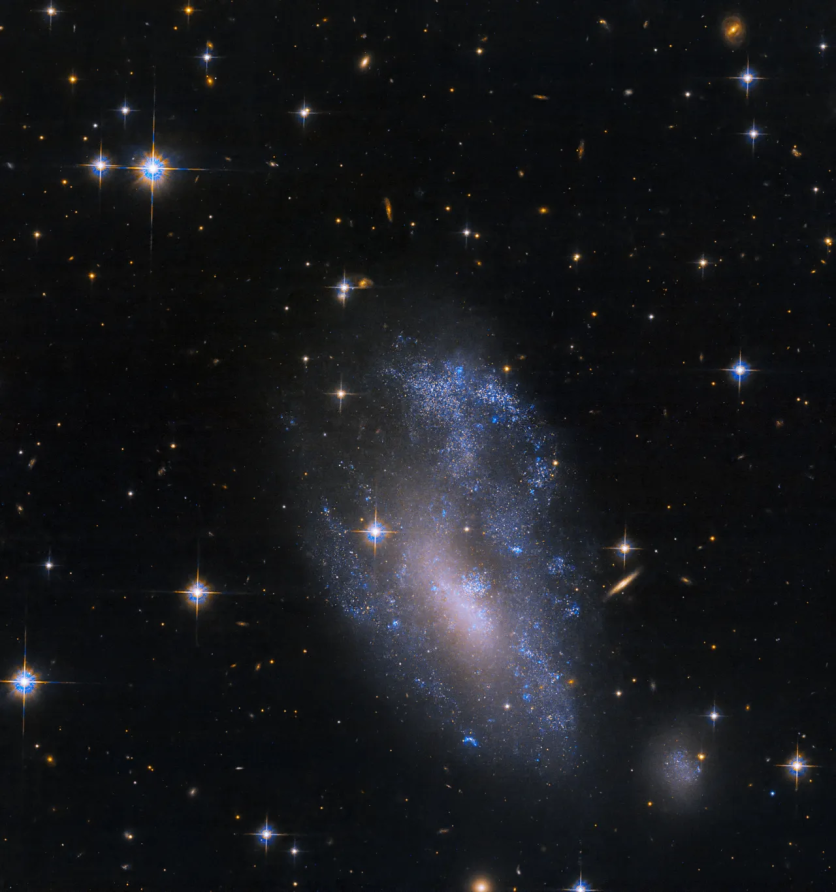NASA's Hubble Space Telescope has set its sights on spiral galaxy UGC 3912. The spiral galaxy exhibited an unusual and distorted appearance, hinting at a suspected encounter with another galaxy.
The detailed image captured by the Hubble reveals the unique features of UGC 3912, suggesting gravitational interactions or encounters have played a role in shaping its current form.

UGC 3912's Distorted Shape
Despite its classification as a spiral galaxy, UGC 3912's distorted shape stands out, indicative of a potential gravitational encounter with another cosmic neighbor.
According to NASA, such interactions, whether gravitational brushes or collisions, can alter the usual paths of stars, dust, and gas within galaxies, giving rise to new formations.
Hence, UGC 3912 may have once boasted an organized spiral structure, but it now appears like a colossal force has blurred its familiar contours. Interestingly, when galaxies experience these interactions, NASA noted that individual stars and objects within them remain intact.
The vast distances between stars prevent collisions, allowing them to peacefully continue along their adjusted orbits, even as the overall shape of the galaxy undergoes significant changes.
According to the Universe Guide, UGC 3912 is described as a Spiral Galaxy located in the constellation of Canis Minor. Situated at a distance of 60,502,008.06 light-years from Earth, UGC 3912 stands as a separate entity, not part of the Milky Way or the Solar System.
The galaxy's celestial coordinates indicate its position in the equatorial region, offering a unique perspective for observers on Earth. Astronomers are closely studying UGC 3912 as part of a broader investigation into supernova activity, particularly focusing on Type II supernovae.
These cosmic events involve the explosive demise of stars at least eight times larger than our Sun. Type II supernovae, characterized by their hydrogen-rich nature, exhibit considerable variation in brightness and spectroscopy, posing a challenge for astronomers seeking to comprehend their diverse characteristics.
Read Also : NASA's Hubble Space Telescope Captures an Amazing View of Side-By-Side Galaxies in Deep Space
A Faint of Bridge of Stars
In related news, NASA's Hubble Space Telescope has captured another celestial spectacle - a faint bridge of stars in the Arp 295 galactic group.
This stunning image showcases one of the galaxies from Arp 295, featuring a bridge of stars and gas extending over 250,000 light-years between two galaxies.
Arp 295 comprises three spiral galaxies: Arp 295a, Arp 295b, and Arp 295c, with their intricate gravitational interactions providing a captivating cosmic display.
Galactic interactions, as demonstrated by Arp 295, are essential in understanding the long-term evolution of galaxies over billions of years. Check out this fascinating bridge of stars here.
Related Article : NASA's Hubble Space Telescope Captures 'Butterfly Nebula' In Stunning Motion | Fun Facts About This Beautiful Space Butterfly

![Apple Watch Series 10 [GPS 42mm]](https://d.techtimes.com/en/full/453899/apple-watch-series-10-gps-42mm.jpg?w=184&h=103&f=9fb3c2ea2db928c663d1d2eadbcb3e52)



